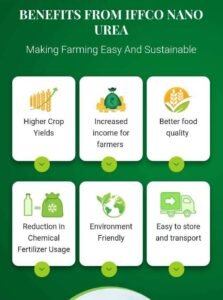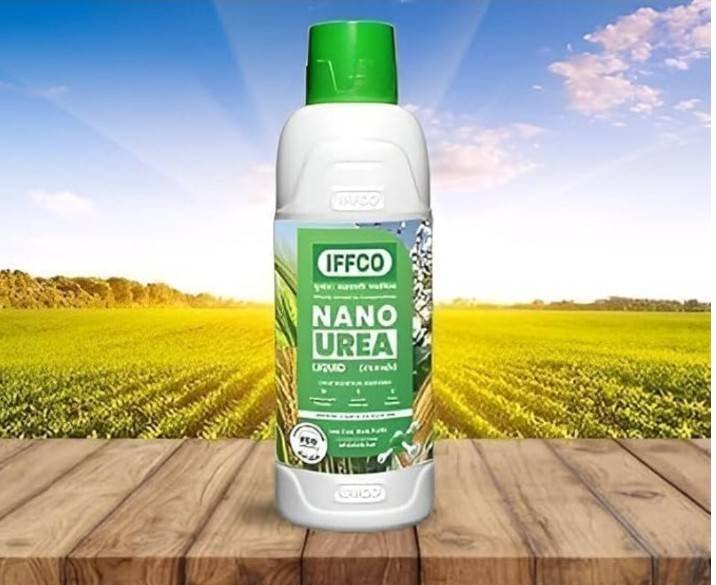
What is Nano Urea? Your Complete Guide
Hey fellow farmers and agriculture enthusiasts! As an Bsc agriculture graduate and masters in Agriculture MBA, I’m thrilled to talk about a game-changer that’s been making waves in our fields: nano urea. It’s a new technology that’s revolutionizing how we provide nitrogen to our crops, offering a smarter, more efficient, and eco-friendlier alternative to the traditional urea we’ve all relied on for decades. Let’s dig into what it is, its benefits, and the reality of using it on the farm.
What Is Nano Urea?
Simply put, nano urea is a liquid fertilizer that uses nanotechnology to deliver nitrogen directly to plants. Unlike conventional urea, which comes in white granular prills, nano urea is a liquid solution containing tiny particles—about 20-50 nanometers in size. To give you an idea of how small that is, a single nano urea particle is over 55,000 times smaller than a traditional urea prill!
This incredibly small size is its superpower. When you spray nano urea on plant leaves, these tiny particles can easily enter through the stomata (the plant’s pores) and other openings. Once inside, the nitrogen is absorbed and used by the plant’s cells, providing a direct and highly efficient nutrient supply.
How It Compares to Granular Urea
For years, we’ve used granular urea, which is applied to the soil. A major drawback of this method is the huge amount of nitrogen loss. Factors like volatilization (turning into gas), leaching (washing away with water), and runoff mean that a significant portion of the fertilizer never reaches the plant’s roots. This is not only inefficient but also a major source of environmental pollution.
Nano urea, on the other hand, is a foliar spray. By applying it directly to the leaves, it boasts a nutrient use efficiency of over 80%, a massive leap compared to the 30-50% efficiency of conventional urea. This means more nitrogen goes into the plant and less goes to waste.
Pricing and Practicality
Here’s where things get interesting. A 500 ml bottle of nano urea is priced at around ₹225 (this can vary slightly). A single bottle is said to be equivalent to the nitrogen provided by a 45 kg bag of conventional urea, which costs approximately ₹242 (subsidized price). On the surface, the cost per unit of fertilizer seems comparable, and nano urea might even seem cheaper.
However, the real-world cost for farmers can be different. While the material itself may be similar in price, nano urea requires specific spraying equipment and, often, more labor to apply. For large-scale farms, the cost of hiring labor or using machinery for repeated foliar sprays can add up, sometimes making the overall cost of using nano urea higher than that of conventional urea.
The Pros and Cons of Using Nano Urea
Pros: The Promise of Precision Farming

- Higher Efficiency: As mentioned, nano urea is incredibly efficient. A little goes a long way, reducing the overall amount of nitrogen needed.
- Increased Yield: Multiple field trials have shown that using nano urea can lead to an increase in crop yield and better food quality.
- Environmental Benefits: By reducing nitrogen loss, nano urea helps minimize soil, water, and air pollution. It reduces the release of nitrous oxide, a potent greenhouse gas.
- Logistical Ease: A 500 ml bottle is far easier to transport and store than a heavy 45 kg bag. This is a huge relief for farmers dealing with storage and handling challenges.
- Reduced Subsidy Burden: Since a single bottle can replace a bag of urea, widespread adoption of nano urea could significantly reduce the government’s hefty subsidy bill on conventional urea.
- Cons: The Challenges and Considerations
- Application Costs: The need for specialized spraying equipment and the associated labor costs can make it more expensive for farmers, especially for large fields.
- Mixed Results: While many studies show positive results, some farmers and scientists have reported mixed outcomes, with some saying it is less effective or doesn’t provide the same yield as granular urea.
- Dependence on Basal Fertilizer: Nano urea is not a complete replacement for all fertilizer needs. It’s meant to supplement basal nitrogen applied through other fertilizers like DAP. Farmers need to be careful not to completely cut off their conventional urea application, as this can negatively impact crop health.
- Skill and Timing: Proper application is crucial. Spraying nano urea at the right time (at critical growth stages) and with the correct dilution is essential for it to work effectively. Incorrect use can lead to issues like leaf burn.
A Step Toward a Sustainable Future
Nano urea is more than just a new product; it’s a key part of the move toward precision and sustainable agriculture. It encourages a shift from blanket, soil-based application to a targeted, need-based foliar spray. While it’s not a silver bullet, and there are still hurdles to overcome, its potential to increase crop productivity while protecting our environment is immense. It reminds us that sometimes, the biggest solutions come in the smallest packages.
For more articles read here










1 thought on “What is Nano Urea? Your Complete Guide”
Comments are closed.